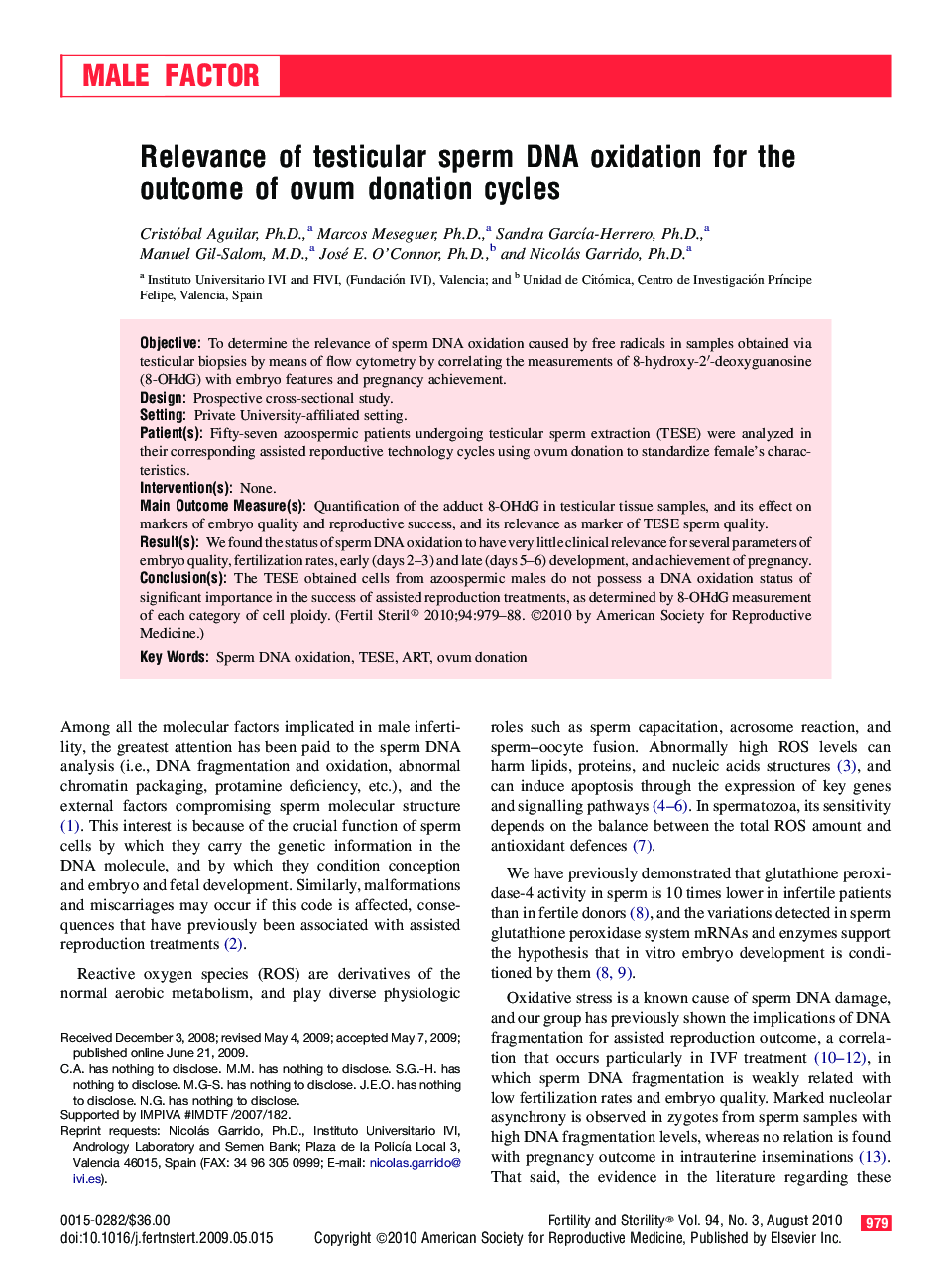| Article ID | Journal | Published Year | Pages | File Type |
|---|---|---|---|---|
| 3933137 | Fertility and Sterility | 2010 | 10 Pages |
ObjectiveTo determine the relevance of sperm DNA oxidation caused by free radicals in samples obtained via testicular biopsies by means of flow cytometry by correlating the measurements of 8-hydroxy-2′-deoxyguanosine (8-OHdG) with embryo features and pregnancy achievement.DesignProspective cross-sectional study.SettingPrivate University-affiliated setting.Patient(s)Fifty-seven azoospermic patients undergoing testicular sperm extraction (TESE) were analyzed in their corresponding assisted reporductive technology cycles using ovum donation to standardize female's characteristics.Intervention(s)None.Main Outcome Measure(s)Quantification of the adduct 8-OHdG in testicular tissue samples, and its effect on markers of embryo quality and reproductive success, and its relevance as marker of TESE sperm quality.Result(s)We found the status of sperm DNA oxidation to have very little clinical relevance for several parameters of embryo quality, fertilization rates, early (days 2–3) and late (days 5–6) development, and achievement of pregnancy.Conclusion(s)The TESE obtained cells from azoospermic males do not possess a DNA oxidation status of significant importance in the success of assisted reproduction treatments, as determined by 8-OHdG measurement of each category of cell ploidy.
